Apple's transition away from Intel processors to Apple Silicon for the Mac has, so far, been a stellar success, earning rave reviews even from the harshest of critics and skeptics. And yet some major Mac software makers have dropped the ball. What's going on?
Baby steps
In AppleInsider's previous "State of Apple Silicon" update published in early February, we noted that half of the most popular Mac apps still rely on Rosetta 2 to run on the M1 processor.
Nearly a month and a half later, some major apps have debuted on the M1, but the vast majority of those mentioned in our last feature remain without M1 support.
Apple's M1 chip — which powers the company's latest MacBook Pro, MacBook Air and Mac mini systems — did see another victory last week when Adobe officially launched its industry-leading photo editing software Photoshop built entirely for Apple Silicon. And by Adobe's own account, the process was pretty straightforward.
Mark Dahm, principal product manager for Photoshop, said in an interview with Computer World that Apple's "significant investment in the developer toolchain and experience" made it a "smooth" experience for the Adobe team.
And even before Photoshop became M1 native, Apple's Rosetta 2 code — which allows legacy Intel apps to run on M1 chips — bought Adobe some time. In Dahm's own words, Photoshop in Rosetta was "running as fast, or even faster than on previous systems."
Sounds like a win all around, right? Not so fast.
Still missing
While Photoshop and Lightroom on the M1 natively are major milestones for Apple's move to the next generation, there are a number of high-profile laggards that have yet to release native M1 apps. These include household names like Google Drive, Microsoft Teams, Dropbox, Skype, Spotify, Kindle, Trello, and Evernote, just to name a few.
And while Adobe has made strides, its most popular app — Acrobat, used for reading PDFs — has yet to see M1 support. InDesign, InCopy, Illustrator, After Effects and other key components of the Adobe family of apps remain reliant on Rosetta 2.
Photoshop's M1 launch also has its share of issues, with key features like Quick Share and Preset Syncing not available. Known bugs also include exporting SVG files, and multi-app workflows like copying and pasting from Lightroom to Photoshop.
Power users might want to put an asterisk next to claims of native M1 support for Photoshop, in other words.
Even Apple itself doesn't get away from this one unscathed: FileMaker Pro and Shazam — both of which are owned by Apple — still don't support the M1 natively.
And longtime loyal Apple developers like CARROT and Readdle have yet to provide M1 versions of popular apps like CARROT Weather and Spark email, even in beta.
What gives?
Unique circumstances
Since we did our last list, there has been some movement. CleanMyMacX and SimpleNote launched support for Apple Silicon in beta. And 1Password went from beta M1 support to public release. But aside from those changes, it's mostly status quo for apps that still depend on Rosetta 2.
Some developers did signal to AppleInsider that they plan on supporting Apple Silicon in the future, including the makers of Audacity, Duet, and Spark. The developer behind Apple's own FileMaker Pro has said support is coming, but in a webinar in the fall of 2020 indicated they are waiting to see what kind of performance future "high-end" Apple Silicon chips will offer. Microsoft has also said it is working on a native M1 version of its popular Teams chat client. None of these, however, have launched beta support yet.
Presumably the Covid-19 pandemic plays a part in all of this. For the last 12 months, teams have been working remotely to slow the spread of the deadly coronavirus, which has had an obvious effect on productivity and collaboration.
Even with all of Apple's excellent tools and developer support, transitioning an app — particularly a massive legacy piece of code — is no simple effort. Now throw working from home into the mix.
Growing pains are inevitable with a platform switch, particularly one as monumental as Apple's transition from Intel to M1.
But still, it has now been more than three months since the first Apple Silicon Macs shipped, and eight months since the Developer Transition Kit was put in the hands of software makers. The world may have been caught off guard by Covid, but no one was surprised by the debut of the M1.
Does it matter?
Apple, frankly, knocked it out of the park with Rosetta 2, seamlessly allow legacy Intel apps to run on its proprietary silicon in a way that most users won't even notice.
Despite this amazing technical achievement, Rosetta 2 is a bridge, not a destination. Apps must be updated to run natively on Apple Silicon if they are to take full advantage of the performance and power saving benefits of the M1 and its successors.
Apple will also need to push out legacy software and cut dead weight if it wants to successfully keep macOS moving forward. It's in everyone's best interest — users, developers, and Apple itself — to have modern Mac apps that run as they should on the platform.
This too shall pass
Unlike Apple's last major transition, from PowerPC to Intel, the Mac is a much larger and more successful platform than ever. That means there are more developers — creating more complex apps — that must recompile their work natively for a new architecture.
But Apple itself is larger and more successful than ever too, and they've used their success and prosperity to the benefit of their development community. Apple's investment in developer tools has simplified switch to M1, and their wizardry in developing Rosetta 2 means that early adopters of the M1 Mac lineup aren't left wanting while developers ply their craft.
As the weeks and months pass and many developers say little to nothing publicly about the progress of bringing their apps to the M1 (or not), the responsibility ultimately falls on them. Apple did its work to make this transition as easy as possible.
It's time for the loyal development community to keep doing their part and make the next-generation Mac experience the best it can possibly be.
William Gallagher contributed to this report.
 Neil Hughes
Neil Hughes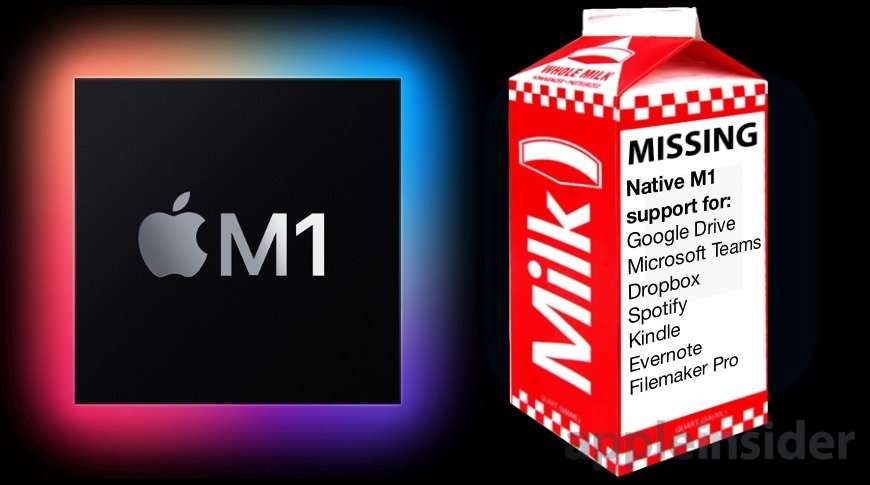
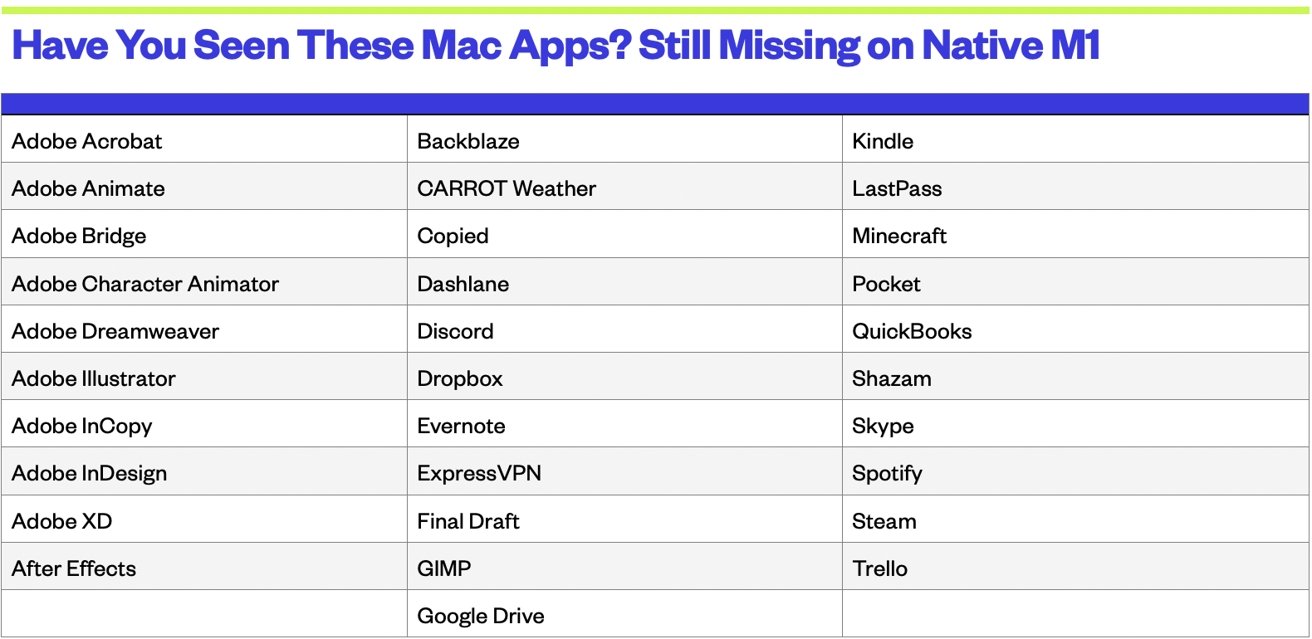
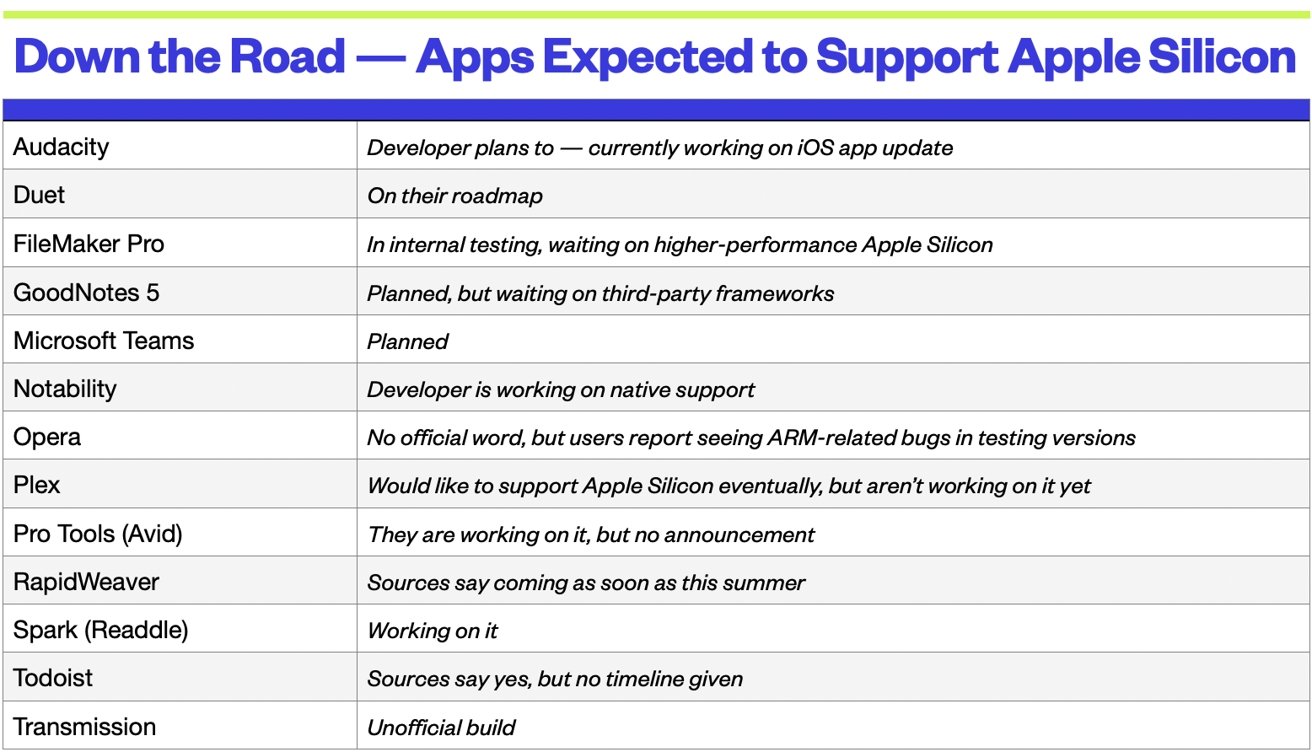
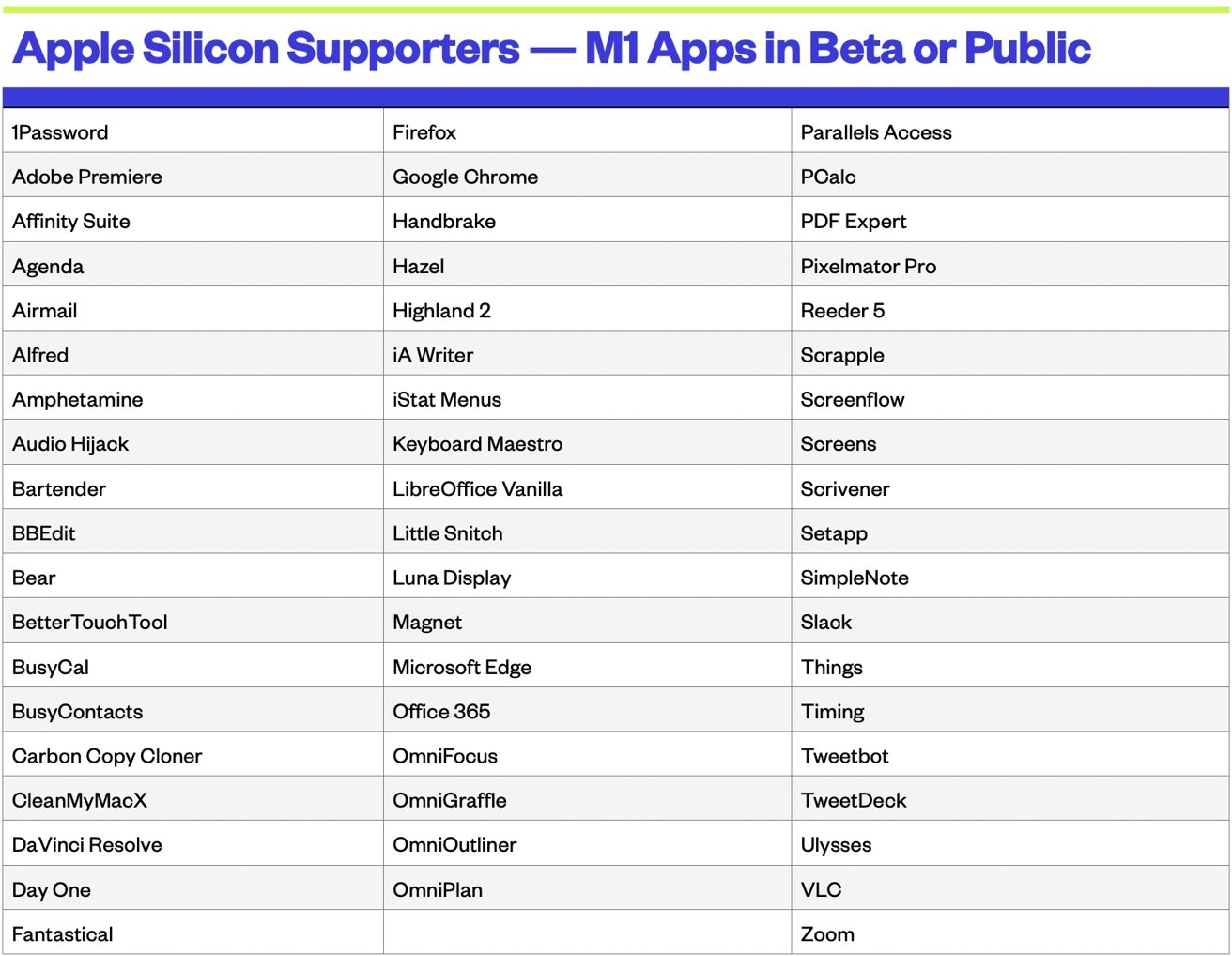







-m.jpg)






 William Gallagher
William Gallagher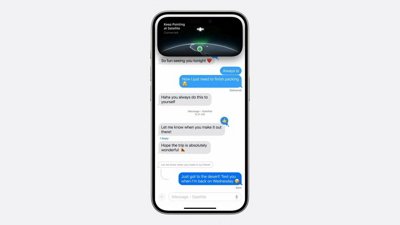
 Malcolm Owen
Malcolm Owen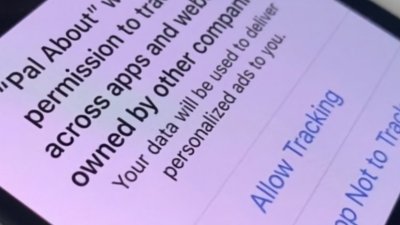

 Brian Patterson
Brian Patterson
 Charles Martin
Charles Martin











31 Comments
As a developer myself the answer is clear. Many software shops, developers, coders, etc... will procrastinate until the absolute last moment to get off their backsides and do something. As long as they know that Rosetta exists, many won't bother. That's the reality.
My delay was I'm switching from Cocoa to Catalyst for my macOS apps. It's a lot of work. I think I've figured everything out now, but the learning curve is long. For one thing, Xcode 12 GUI doesn't support building for both macOS 10.15 (Intel) and 11 (Intel and M1), you need to tweak the project in a text editor. For another, you need to implement the old Mac help system in your Catalyst apps, including Help Indexer, and there's zero support for it in Xcode. Another thing is, Apple didn't post sample code showing how to implement menus on Catalyst apps, so it's a guessing game getting it working. There's zero sample code for the transition -- which is insane. Some frameworks simply don't work in Catalyst apps: you can forget about StoreKit and GameKit, they don't work on M1. There's more, I could make a longer list, but now that I've figured everything out, I'm busy releasing apps.
Are you kidding me? You believe that these developers should make native M1 Mac ports their #1 priority when these Macs are like 0.5% of the market at best?
Priority list:
iOS apps (2 billion devices)
Windows apps (1 billion devices)
Intel macOS apps (hundreds of millions of devices)
Android apps (3 billion devices)
ChromeOS platform support (according to the latest Statcounter have 2% market share, Google claims that they are almost 5%)
M1 macOS apps (maybe 5 million devices)
I am dead serious here. Apple sold 6.8 million Macs in 4Q 2020.
https://www.macrumors.com/2021/01/11/mac-shipments-up-4q-2020-gartner/
M1 Macs were only available less than half that time, plus people and especially enterprises didn't stop buying Intel Macs either. Add in 1Q 2021 and that is 5-6 million people that have bought M1 MacBook Air, Mac Mini and 13' MBPs. And as these machines are limited to 16 GB of RAM, 2 displays and - the point of this article - has software compatibility/availability issues the early adopters are either people using the M1 Mac as a secondary machine (to their Intel Mac or their iPad Pro) or were entry level device types who relied mostly on first party software and web/browser stuff anyway.
Honestly, what do you believe the job of a software company should be anyway? To make a platform offered by a $2 trillion company look good by shrinking their "not available on M1" list? Or to make money to pay their employees, pay the bills and stay in business by creating software that people will buy? If you realize that the LATTER is the case then it is in the interests of these companies to prioritize development projects that will actually make enough money to justify the coding effort. Right now the tiny subset of the 5 million M1 Mac users won't do it.
Next year? Sure. Apple will have transitioned all of their lineup except maybe the 26 core Xeon Mac Pro to M1 by then, and the M1 Mac user base will be 20-25 million. Also, despite your "they had the developer kit and 5 months to buy an M1 Mac!" ... er, no. Large outfits with tens of thousands of programmers like Dropbox, Google, Amazon, Adobe etc. didn't get the developer kit, OK? Those went out to small developers. The bigger software companies are probably still in the process of acquiring M1 Macs to armies of developers that need to port huge software packages with millions of lines of code over. Who knows if they've added these devices to their enterprise acquisitions yet. (I bet most companies haven't.)
Yes, Apple got this done ... but Apple makes several hundred bucks on each M1 Mac sold. They've probably cleared $1 billion in revenue from the M1 Mac line already assuming a margin of $200 per device. But this does not mean that there is much revenue in this yet for the companies that make the software.
It's also 3rd party libraries. A developer may not be able to compile for Apple Silicon until those libraries have been ported.
QuickBooks is mentioned as not being M1 ready. So many still think QuickBooks and Quicken are owned by the same company, Intuit. Intuit sold off Quicken to a private equity group several years ago. Quicken's new owners have taken the ball and run with it. The Mac version is vastly improved and is fully M1 compatible as of a couple of updates ago.
Meanwhile Intuit, who never gave a crap about Macs and who even decided to cease development of Quicken for Mac when their then CEO (Bill Campbell) sat on Apple’s board. Jobs had to use his powers of persuasion to stop it. That Intuit is now dragging its feet on making QuickBooks M1 compatible should come as no surprise to Mac users.